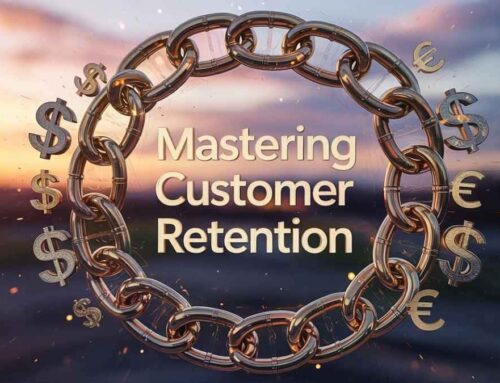
Customer Experience Drives Business Growth
Remember the last time you had an exceptional experience with a company? Maybe it was a store employee who went above and beyond to help you find the perfect gift or a customer service representative who listened patiently and resolved your issue efficiently.
These positive interactions leave a lasting impression, making you more likely to return and recommend the business to others.
In today’s competitive landscape, exceptional customer experience (CX) is no longer a luxury; it’s a necessity for business growth. Think of it as your secret weapon, a powerful tool for attracting new customers, fostering loyalty and ultimately increasing your bottom line.
Understanding Customer Experience
Customer experience refers to the sum of all interactions a customer has with a company, from the first point of contact to the final transaction and beyond. It encompasses every touchpoint, including website navigation, customer service interactions, product quality and after-sales support.
A positive customer experience leads to customer satisfaction, loyalty and advocacy, while a negative experience can result in lost business and damage to the brand’s reputation.
The Importance of Customer Experience in Business Growth
- Customer Retention
One of the most significant benefits of a strong customer experience is increased customer retention. Satisfied customers are more likely to return to a brand they trust and have had positive experiences with. Retaining existing customers is often more cost-effective than acquiring new ones, making customer experience a crucial factor in long-term business growth.
- Word-of-Mouth Marketing
Happy customers are more likely to recommend a brand to their friends, family and colleagues. Word-of-mouth marketing is incredibly powerful because it comes from a trusted source. Positive reviews and recommendations can attract new customers and drive business growth without the need for expensive marketing campaigns.
- Competitive Advantage
In a crowded marketplace, providing an exceptional customer experience can set a business apart from its competitors. Companies that prioritize CX can create a loyal customer base that is less likely to be swayed by competitors’ offerings. This competitive advantage can lead to increased market share and revenue growth.
- Increased Revenue
A positive customer experience can directly impact a company’s bottom line. Satisfied customers are more likely to make repeat purchases, spend more per transaction and explore additional products or services offered by the brand. This increased revenue can fuel further business growth and expansion.
- Brand Loyalty and Advocacy
Customers who have consistently positive experiences with a brand are more likely to develop strong emotional connections with it. These loyal customers are not only less likely to switch to competitors but also become advocates for the brand. They willingly promote the brand through word-of-mouth and social media, amplifying its reach and reputation.
Key Elements of a Positive Customer Experience
- Understanding Customer Needs
To provide an exceptional customer experience, businesses must first understand their customers’ needs, preferences and pain points. Conducting market research, gathering customer feedback and analyzing customer data can help businesses gain valuable insights into what their customers want and expect.
- Consistent and Personalized Service
Consistency is key to building trust with customers. Businesses should strive to deliver a consistent experience across all touchpoints, whether online or offline. Personalization also plays a crucial role in enhancing the customer experience. Tailoring interactions and offerings to individual customers’ preferences can make them feel valued and appreciated.
- Efficient and Responsive Customer Service
Timely and effective customer service is essential for resolving issues and maintaining customer satisfaction. Businesses should invest in training their customer service teams to be knowledgeable, empathetic and responsive. Offering multiple channels for customer support, such as phone, email, chat and social media, can also enhance accessibility and convenience.
- User-Friendly Technology
In today’s digital age, technology plays a significant role in shaping the customer experience. Businesses should ensure that their websites, mobile apps and other digital platforms are user-friendly, intuitive and responsive. Streamlining the online purchasing process and providing self-service options can enhance convenience and satisfaction.
- Quality Products and Services
Ultimately, the quality of a company’s products or services is a fundamental aspect of the customer experience. Businesses must consistently deliver high-quality offerings that meet or exceed customer expectations. This includes ensuring product reliability, durability and value for money.
- Emotional Connection
Building an emotional connection with customers can turn a transactional relationship into a loyal and enduring one. Businesses can achieve this by expressing genuine appreciation, celebrating milestones with customers and creating memorable experiences that resonate on a personal level.
Practical Steps to Enhance Customer Experience
- Create a Customer-Centric Culture
A customer-centric culture places the customer at the heart of all business decisions. This involves training employees to prioritize customer satisfaction, fostering a positive and empathetic attitude and encouraging proactive problem-solving. Leadership should lead by example and demonstrate a commitment to delivering exceptional customer experiences.
- Leverage Customer Feedback
Actively seeking and acting on customer feedback is essential for continuous improvement. Businesses should implement mechanisms for collecting feedback, such as surveys, reviews and social media monitoring. Analyzing this feedback can provide valuable insights into areas for improvement and help businesses make informed decisions.
- Invest in Employee Training
Employees play a crucial role in shaping the customer experience. Investing in comprehensive training programs can equip employees with the skills and knowledge needed to deliver exceptional service. Training should cover areas such as effective communication, problem-solving and empathy, as well as product knowledge and technical skills.
- Utilize Technology and Automation
Technology can streamline and enhance various aspects of the customer experience. Businesses should leverage customer relationship management (CRM) systems, chatbots and automation tools to improve efficiency and responsiveness. Implementing data analytics can also help businesses personalize interactions and anticipate customer needs.
- Continuously Monitor and Improve
Customer experience is not a one-time effort but an ongoing process. Businesses should continuously monitor their performance and make improvements as needed. Regularly reviewing key performance indicators (KPIs), such as customer satisfaction scores, net promoter scores (NPS) and customer retention rates, can help businesses track their progress and identify areas for enhancement.
- Empower Customers with Self-Service Options
Many customers prefer to find solutions to their issues independently. Offering self-service options, such as FAQs, knowledge bases and video tutorials, can empower customers to resolve their queries quickly and conveniently. This not only enhances the customer experience but also reduces the burden on customer support teams.
- Foster a Strong Online Presence
In the digital age, a strong online presence is crucial for delivering a seamless customer experience. Businesses should ensure that their websites are easy to navigate, mobile-friendly and optimized for search engines. Engaging with customers on social media platforms and providing timely responses can also enhance the overall experience.
- Personalize Marketing Efforts
Personalized marketing efforts can significantly impact the customer experience. Businesses should leverage customer data to tailor their marketing messages, offers and recommendations to individual preferences and behaviors. Personalized email campaigns, targeted advertisements and product recommendations can create a more relevant and engaging experience for customers.
- Address Customer Pain Points Proactively
Anticipating and addressing customer pain points before they escalate can prevent dissatisfaction and build trust. Businesses should identify common issues and implement proactive measures to resolve them. This could include improving product quality, streamlining processes and enhancing communication to prevent potential problems.
- Celebrate Customer Successes
Acknowledging and celebrating customer successes can strengthen the emotional connection between the brand and its customers. This could involve recognizing milestones, such as anniversaries or significant purchases and offering rewards or personalized messages. Celebrating customer achievements demonstrates appreciation and fosters a sense of loyalty.
Conclusion
In conclusion, the role of customer experience in business growth cannot be overstated. A positive customer experience not only enhances customer satisfaction and loyalty but also drives word-of-mouth marketing, increases revenue and provides a competitive advantage.
By understanding customer needs, delivering consistent and personalized service, investing in employee training and leveraging technology, businesses can create exceptional customer experiences that fuel sustainable growth.
Prioritizing customer experience is not just a strategy; it is a fundamental mindset that can transform businesses and lead to long-term success. As businesses continue to navigate an ever-evolving marketplace, those that prioritize and excel in delivering exceptional customer experiences will be the ones that thrive and grow.
The journey towards enhancing customer experience is ongoing and it requires dedication, innovation and a deep commitment to understanding and meeting customer needs. By adopting a customer-centric approach, businesses can build lasting relationships, foster loyalty and create a strong foundation for sustainable growth in the competitive landscape.














